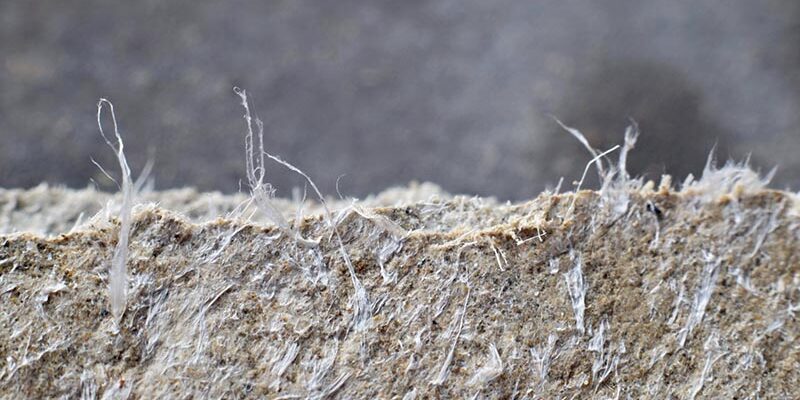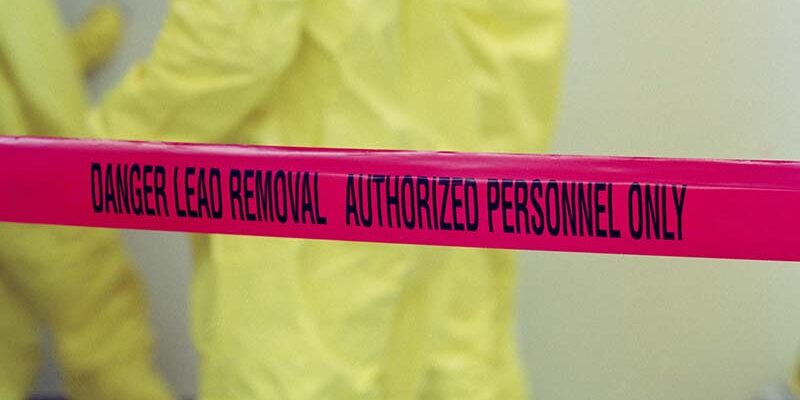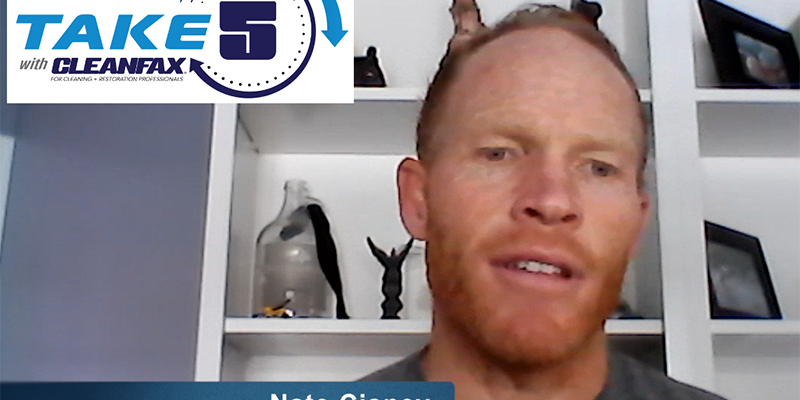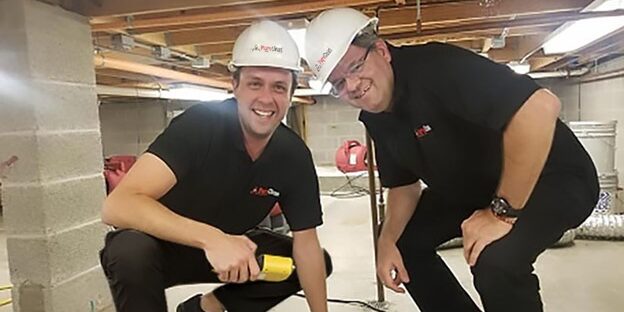2019 Restoration Industry Leaders Review: Rainbow International of Mesa
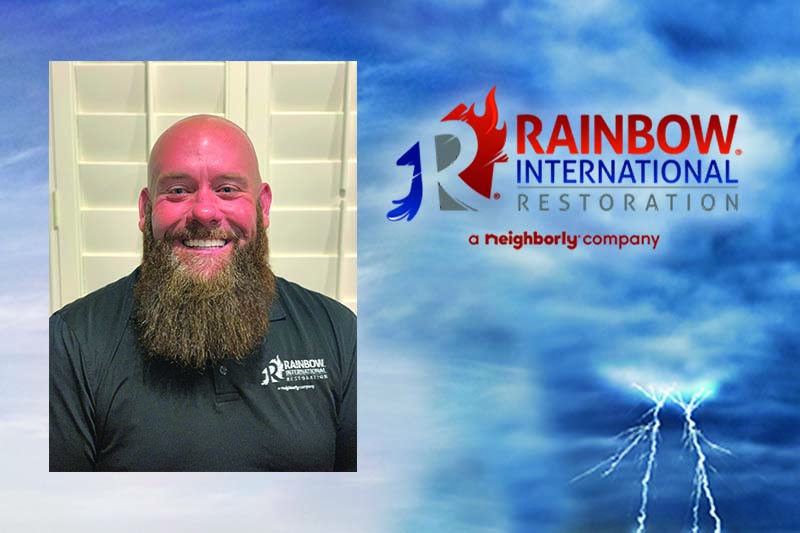
by Amanda Hosey
If you’ve been mulling over joining a franchise system, then Dallas Neville of Rainbow International of Mesa, AZ, a Neighborly Company, is your guy to talk to. After 17 years as an independent restoration contractor, he transformed his company into a Rainbow International franchise in early 2017. And what does he have to say about the move?
“If I were to start all over in this industry, I’d probably go the franchise route way sooner,” Neville says.
In the beginning
Twenty years ago, right out of high school and long before franchising, or even restoration was at the top of his mind, Neville began a carpet cleaning business. The cleaning company became successful easily, especially after taking over carpet cleaning for a large movie theater chain.
However, he says, “It wasn’t long before I realized you have to clean a vast amount of carpet for a lot of hours just to make a decent amount of money, whereas you could make the same amount of money, if not more, from a single flood.”
But some of Neville’s repeat customers started calling about water losses, so a relative in the restoration industry helped get him started doing restoration work. He got his certifications and never looked back.
“I kind of migrated away from carpet cleaning completely and strictly handle restoration now,” he says.
When Neville started in the restoration industry, he explains, “There wasn’t nearly the level of competition there is now, so getting into the industry was a lot easier, the volume of work was a lot better, and we were able to get pretty good, rapid success.”
Two decades of changes
Like any 20-year-old company, Neville’s has seen its share of challenges and changes. What started out as an owner, a tech, and a truck has grown into 17 employees, nine trucks, a 23,000-square-foot facility, and a whole lot more. The company is also full service now, performing water damage, mold, asbestos, fire, and contents work to name a few.
Neville credits much of his success to “growing the right way,” by adding employees and trucks slowly. He made sure the demand for work warranted adding to the company.
“I didn’t want to incur a ton of debt to be able to grow the company. So, I worked harder myself, took a lot of calls myself… It took about five years to get to a point where I had a collection of competent employees.”
In its first year, the company, comprised of Neville and one technician, saw revenue of about $170,000. Last year, it finished at $2.5 million, much of which came from asbestos abatement, which is a niche that Neville has found pays well and keeps the crew busy. The company is also expanding into two new territories, which will allow it to cover 3.5-4 million homes.
Much of the company’s growth can be attributed to its transition into a Rainbow International franchise in early 2017. Like many in the industry, Neville was hesitant to go the franchising route, but he says he wishes he’d done it sooner.
“There’s a lot of different-colored trucks out there that people hate. Insurance adjusters talk nothing but bad about a lot of the franchises,” Neville explains. “But I believe every franchise has some great franchises in it, and they have some bad apples, too, just like everyday life. You have to distinguish yourself as one of the good apples who’s going to do the right thing and not shortcut the jobs and will build correctly.”
Since he chose to franchise with Rainbow, he says he feels the benefits of having billions of dollars backing the company by being under the Neighborly umbrella. According to Neville, “It carries a lot more weight when these insurance carriers see that a big national franchise is involved because they know, if something goes wrong, corporate is going to step in and handle it.”
Still again, much growth of the company has come from getting on the national TPA accounts. He has found program work to be a major boost to his company, which also has an in-house marketer who markets to insurance agents directly.
“We found that 27% of all claims volume goes through the call center, so that means the additional 73% goes through the actual agency office. Most insureds will call their agent prior to turning in a loss to determine if it’s worth them turning it in,” Neville says. The company established relationships with agents throughout the area that call Rainbow to get a professional estimate.
“We’d rather get out there and at least get eyes on the loss and see if it’s worth them turning in; if not, we can advise the agent. If it is, we can go ahead and facilitate the loss,” Neville adds.
The best and the worst of the industry
But Neville doesn’t see insurance work as all sunshine and roses. He acknowledges that the hardest problem in the industry is getting paid for work done in conjunction with insurance companies.
“Sometimes you have to give blood to get them to pay their bills on time,” he says. “A lot of insurance companies think that we’re banks who’ll finance these jobs for three months. Getting the payment is like pulling teeth; helping the insured is happiness in our industry.”
Neville says the best part of the work for him is helping people in crisis, serving the actual insured: “They are at their nerves’ ends. And then you can see their faces change as we bring their place back to pre-loss condition—and most of the time to even better condition. Seeing them realize it’s going to be okay, that they can move on, and they can rebuild their lives is the best part of the work.”
For those just starting the journey
Neville is realistic about the restoration industry as it exists today. He says, “If I had to start all over right now, I don’t know if I’d stay in the business. It would be a hard business to get into.”
There are more than 200 restoration contractors in his area alone, according to Neville, and every one of them is having to really diversify to keep up with the competition. That competition doesn’t end with fighting over clients; it also extends to getting the good employees.
“One of the biggest challenges is finding trustworthy employees who actually want to work,” Neville explains, (though he says most of his employees have been with the company for years). “But Rainbow has a network of hiring and recruiting firms that they have partnered up with to qualify and screen candidates prior to them coming us. You know, we want to hire certified techs right from the get-go…So, it’s one less worry for us.”
But for those committed to venturing into the industry, Neville recommends getting all the certifications you can to handle the need for diversification as well as learning to be okay with change—new techniques, different ways of doing things.
Neville says, “You can always learn something new. Stay on top of your training, whether that’s new techniques in magazines, new requirements or techniques in standards, changes in equipment, etc.
“Those opportunities allow you to become better at your field, add more tools to your craft, and be a better, more successful entrepreneur.”
What does a successful restoration company look like? Where does one start, and what are its goals? What can we learn from someone else’s journey? This month, we’re bringing you the stories of three very different restoration companies, their highs and lows and how they found success. Check out the other companies featured in our 2019 Restoration Industry Leaders Review:
Amanda Hosey is the managing editor of Cleanfax. She has worked as an editor and writer for more than six years, including four years with Cleanfax. Reach her at [email protected].


